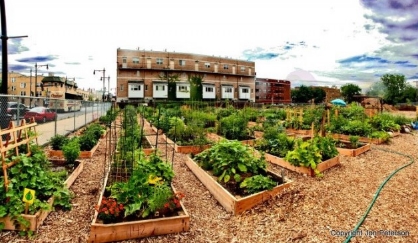How organic gardens aren’t just healthier, they save you money too
05/11/2016 / By usafeaturesmedia

(Homesteading.news) One of the most common excuses people have for not eating healthy is that healthy food costs too much, particularly organic food that is often priced slightly higher than comparable conventional food. But eating healthy and organic does not have to break the bank, especially if you follow these helpful tips for maximizing nutrition on a budget.
Because of the rapid growth of the organic sector over the past decade or so, organic products are becoming increasingly more abundant, which means they are also naturally decreasing in cost as the market expands. This in and of itself has made organic food much more accessible to the average American family, as many stores now sell organic produce, for instance, at prices that are very close to those for conventional produce.
Organic varieties of certain foods are even becoming the standard at some grocery stores, as many growers and producers are switching to organic just to keep up with demand. According to the Organic Trade Association (OTA), the organic sector grew by 9.5 percent in 2011, reaching $31.5 billion in total sales, and nearly 80 percent of American families now buy organic.
But here are some additional tips for maximizing nutrition for you and your family on a budget:
Grow your own fruits and vegetables. Obviously you’re already doing this, but many families that have unused yard space don’t, and that’s too bad because it can be utilized to grow fruits and vegetables throughout the year. Tomatoes, lettuce, blueberries, strawberries — these and many other varieties of produce grow surprisingly well in many areas of the country, and require less maintenance that you would probably think. In addition, raising chickens for eggs is another relatively simple way to cut costs and obtain the best eggs you will ever taste.
100% organic essential oil sets now available for your home and personal care, including Rosemary, Oregano, Eucalyptus, Tea Tree, Clary Sage and more, all 100% organic and laboratory tested for safety. A multitude of uses, from stress reduction to topical first aid. See the complete listing here, and help support this news site.
Try picking a few fruits and vegetables that grow best in your climate and cultivate them as a family. Not only will this help cut food costs while providing a virtually free source of fresh, clean food, but it will also give you and your family the opportunity to learn something new together. There are few things in life more fulfilling than reaping the fruits of your own labor.
Buy shares in a local community supported agriculture (CSA) program. There is a way you can leverage your own produce grown on your own land: Organize a community-supported agriculture (CSA) program. Triple or even quadruple the amount of food available for your homesteading-minded community.
CSAs allow individuals and families to sign up with a local farm or distributor to receive weekly or bi-weekly boxes of meat, produce, eggs, flours, and other foods, depending on what is grown or sourced by the supplier. Because they involve buying regularly and in bulk, CSAs are a great way for families to cut food costs while obtaining the highest quality local foods available.
Depending on the size of the farm, not all CSA food will be certified organic. But in many cases, the farmers still grow and produce their food using organic methods, despite the fact that it might not be officially certified as such. This is why it is important to form relationships with local farmers and growers in order to learn about their cultivation methods.
To learn more about CSAs, and to find one near you, visit: http://www.localharvest.org/csa/
Join a cooperative, visit your local farmers market, and keep an eye out for sales and discounts. Cooperatives are similar to CSAs in that they typically offer memberships for a nominal fee, which allows members to obtain deep discounts on food. Cooperatives tend to have a lot more food options to choose from than CSAs, and because members are cooperatively buying in bulk, prices are far lower than they would be at the retail level.
To learn more about food cooperatives, and to find one near you, visit:
http://www.localharvest.org/food-coops/
Local farmers markets and health food stores are also viable options, particularly when buying in-season produce. Many health food stores also have clearance shelves that offer deep discounts on overstocked or nearing out-of-date foods. These same stores often carry little coupon books that can be used to obtain discounts on regular and sale-priced items as well.
In many cases, food at health food stores, particularly when combined with coupons and other sales, ends up being cheaper than the food sold in the “healthy” or “organic” sections of your local conventional grocery store chain.
Sources for this article include:
http://wholelifestylenutrition.com
Reporting by Jonathan Benson, NaturalNews.com.
More:
- Convert your garden to organic in just three years
- Top 7 reasons why the food you produce should be organic
- Produce thousands of pounds of fresh, organic food on small parcels of land
Homesteading.news is part of the USA Features Media network. Check out our daily headlines here.
Tagged Under: community garden, gardening, Organic




















